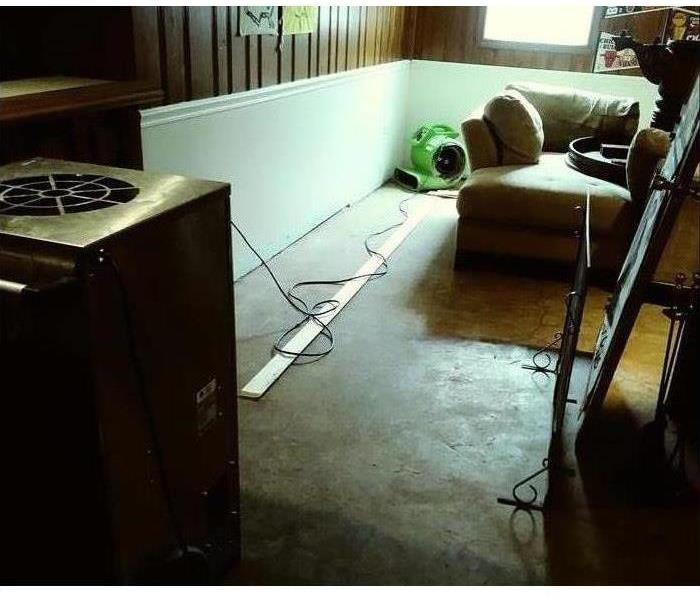Rain Isn’t the Only Source of Storm Damage
4/25/2019 (Permalink)
A burst pipe is common in the winter season. Often, businesses will close during a winter storm. While it is important to keep you and the employees safe, you should also consider your building. When it comes to dropped temperatures or power outages, the building can severely drop in temperature. This extreme level of cold can cause a frozen pipe to burst.
What to do when that happens.
Shut off the Water
Once a pipe bursts, the first step that you should take is to turn off the water. The more water that floods your building, the worse the damage might be. Standing water is a haven for mold growth and only gets worse as it rises. Turning off the water gives you the ability to control the depth.
Assess the Damage
Once the pipes burst, your building can become quickly flooded. This leads to standing water. Some people have spread the misconception that mold does not grow in colder water, but it still can. The moisture will seep into the walls and carpeting and leave you with black mold and mildew. Once you have drained the water, it is time to assess the damage done.
Call a Mitigation Company
A professional service will be able to judge the work that needs to be done on your building. Without a professional, it is difficult to test what can and cannot be salvaged. In addition, a company will be able to tell you if the flood damage from the burst pipe will require a complete restoration of different areas.
Winter storms are dangerous for a number of reasons. What most people do not consider, however, is how storms lead to flood damage. The best way to prepare for floods during a winter storm is to make sure your pipes are taken care of. A burst pipe not only costs you money with the plumber, but it can also lead to damage throughout your Chicago, IL, building.



 24/7 Emergency Service
24/7 Emergency Service
